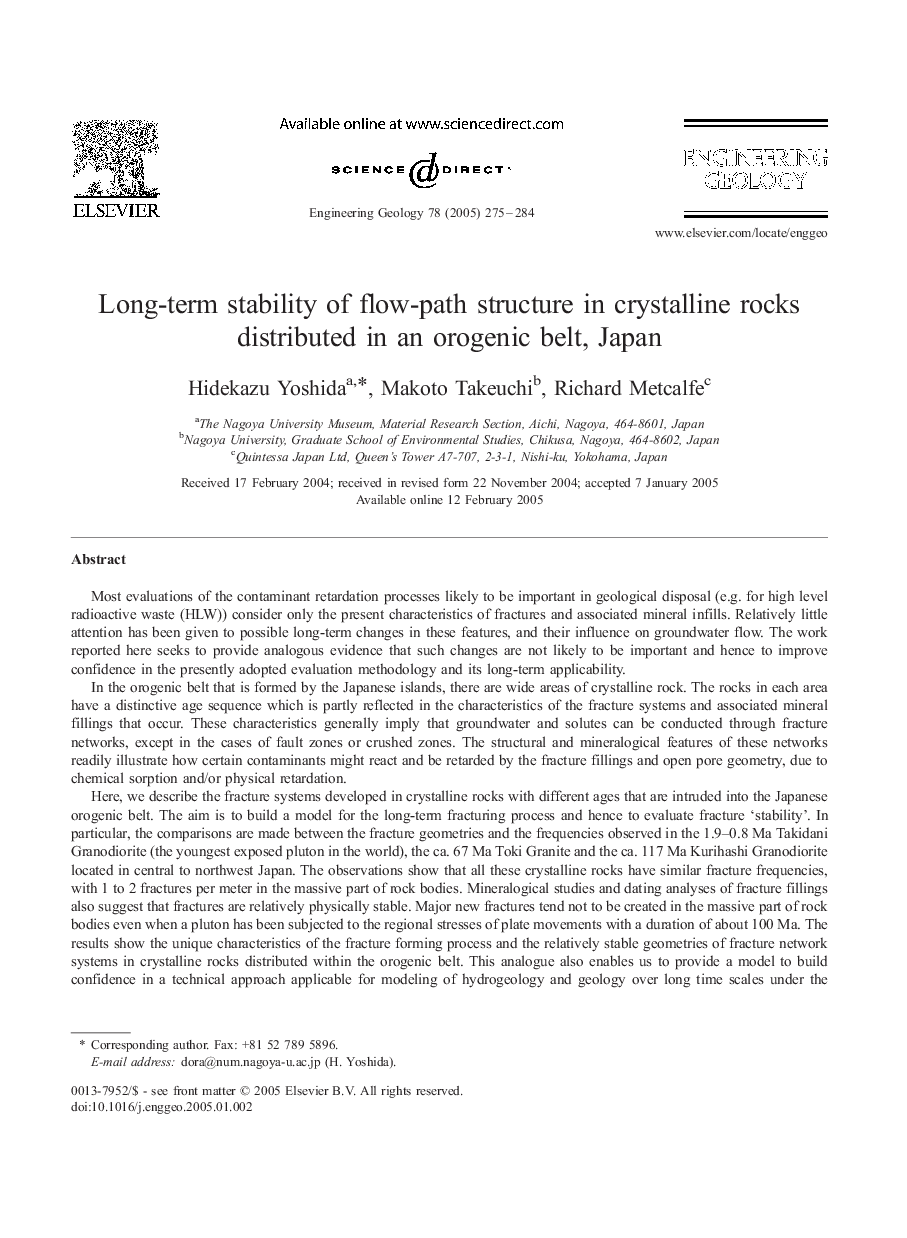| Article ID | Journal | Published Year | Pages | File Type |
|---|---|---|---|---|
| 9538041 | Engineering Geology | 2005 | 10 Pages |
Abstract
Here, we describe the fracture systems developed in crystalline rocks with different ages that are intruded into the Japanese orogenic belt. The aim is to build a model for the long-term fracturing process and hence to evaluate fracture 'stability'. In particular, the comparisons are made between the fracture geometries and the frequencies observed in the 1.9-0.8 Ma Takidani Granodiorite (the youngest exposed pluton in the world), the ca. 67 Ma Toki Granite and the ca. 117 Ma Kurihashi Granodiorite located in central to northwest Japan. The observations show that all these crystalline rocks have similar fracture frequencies, with 1 to 2 fractures per meter in the massive part of rock bodies. Mineralogical studies and dating analyses of fracture fillings also suggest that fractures are relatively physically stable. Major new fractures tend not to be created in the massive part of rock bodies even when a pluton has been subjected to the regional stresses of plate movements with a duration of about 100 Ma. The results show the unique characteristics of the fracture forming process and the relatively stable geometries of fracture network systems in crystalline rocks distributed within the orogenic belt. This analogue also enables us to provide a model to build confidence in a technical approach applicable for modeling of hydrogeology and geology over long time scales under the orogenic stress field present in Japan. The model may also be useful for other stable tectonic settings as well as for a characterizing sites in crystalline rocks for the possible geological disposal of HLW and other toxic wastes.
Related Topics
Physical Sciences and Engineering
Earth and Planetary Sciences
Geotechnical Engineering and Engineering Geology
Authors
Hidekazu Yoshida, Makoto Takeuchi, Richard Metcalfe,
